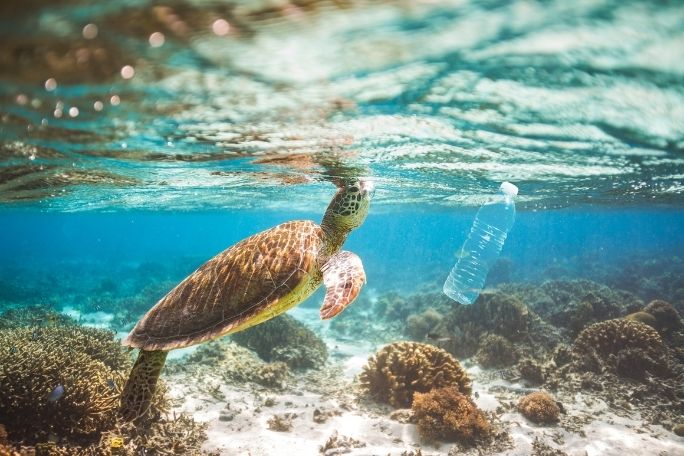Lesson summary
This activity asks students to consider the impacts of pollution on our ocean environments by designing and creating a poster.
Learning intentions:
Students will...
- recognise that rubbish is a big problem for underwater biodiversity
- understand that we all have a responsibility in preventing rubbish from going into our oceans.
Lesson guides and printables
Lesson details
Curriculum Mapping
Content descriptions:
Year 3 English:
- Draw connections between personal experiences and the worlds of texts, and share responses with others (ACELT1596)
Year 3 Science:
- Represent and communicate ideas and findings in a variety of ways such as diagrams, physical representations and simple reports (ACSIS060)
Year 4 English:
- Discuss literary experiences with others, sharing responses and expressing a point of view (ACELT1603)
Year 4 Science:
- Represent and communicate ideas and findings in a variety of ways such as diagrams, physical representations and simple reports (ACSIS071)
Syllabus Outcomes: ST2-4WS, EN2-11D.
General capabilities: Critical and creative thinking, Personal and social capability.
Time required: 60 mins
Level of teacher scaffolding: Medium – Assist students in creating posters.
Resources required
- Art materials
Additional info
This is an original Cool.org lesson. Facts and figures in these lessons may have changed since this lesson was published. We always endeavour to update our resources in a timely manner, but if you see an error or issue in our resources please get in touch with us.


Welcome back!
Don't have an account yet?
Log in with:
By signing up to Cool.org you consent and agree to Cool's privacy policy to
store, manage and process your personal information. To read more, please see
our privacy policy here(Opens in new tab).
Create your free Cool.org account.
Many of our resources are free, with an option to upgrade to Cool+ for premium content.
Already have an account?
Sign up with:
By signing up to Cool.org you consent and agree to Cool's privacy policy to
store, manage and process your personal information. To read more, please see
our privacy policy here(Opens in new tab).